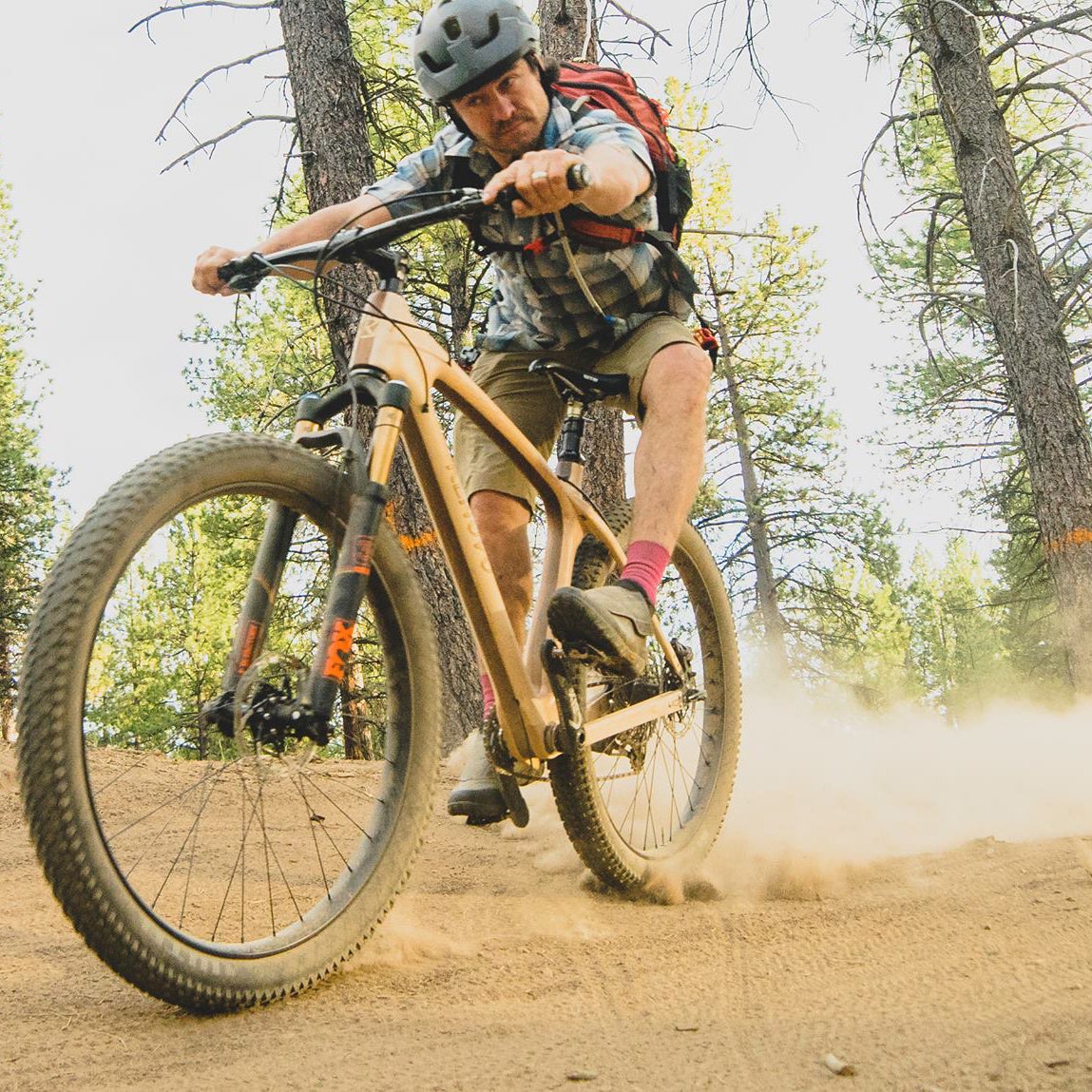Bicycles are the premiere example of functional art. And nowhere is there a more beautiful bike frame than those made by Portland, Oregon–based . Can wood work as a mountain bike? We spent two weeks on the Fat-Ash 27.5+ to find out.
Why Wood?
Wood has remarkable engineering qualities. It’s light, strong, withstands lots of stress, and, perhaps most notably, has vibration-damping abilities several times that of steel or carbon fiber. It’s also highly damage-resistant, incredibly simple to repair, and renewable as a resource. That it’s also beautiful doesn’t hurt.
Plus, the idea of a wooden bicycle is as old as the bicycle itself. The first bicycles back in the early 1800s were all made from wood, as were the first planes, boats, and cars. Today, modern manufacturing techniques are giving the material new purpose.
What’s Renovo?
Renovo, founded ten years ago by Ken Wheeler, a former airplane engineer, makes road, commuter, and mountain bikes. All are made almost entirely from wood, with the exception of aluminum inserts in the head tube, bottom bracket, seat tube, and custom rear dropouts.
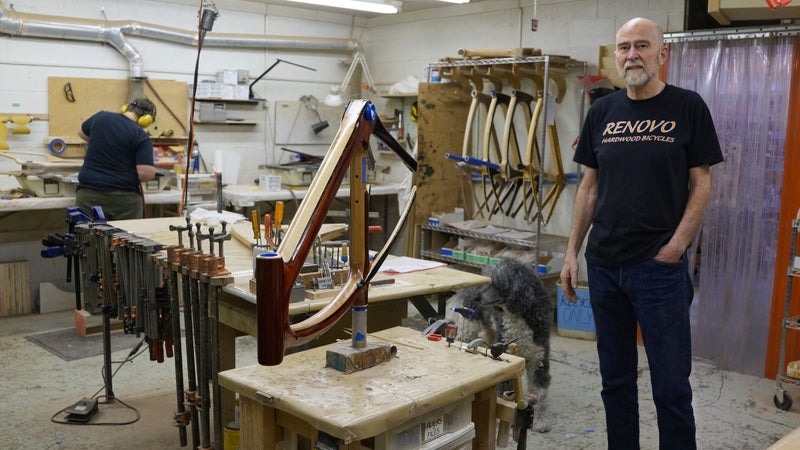
The company uses all kinds of wood. Visiting the factory, I saw zebrawood, ironwood, and several types of oak, hickory, and maple. Each variety has different strengths and excels in different applications. This is what gives Renovo the ability to precisely tailor properties like stiffness, hardness, and dampening across different frames and frame components.
Before it can be turned into a frame, the wood is first kiln-dried. This eliminates warping and cracking and ensures consistency during the manufacturing process. Planks of various woods are then selected to compose the specific frame being constructed. They are milled to exacting thicknesses and lengths, and then laminated together. Once these multi-wood planks are bonded, they are sent to a CNC machine, where joints are cut, tubes are hollowed, and beautiful curves are revealed.
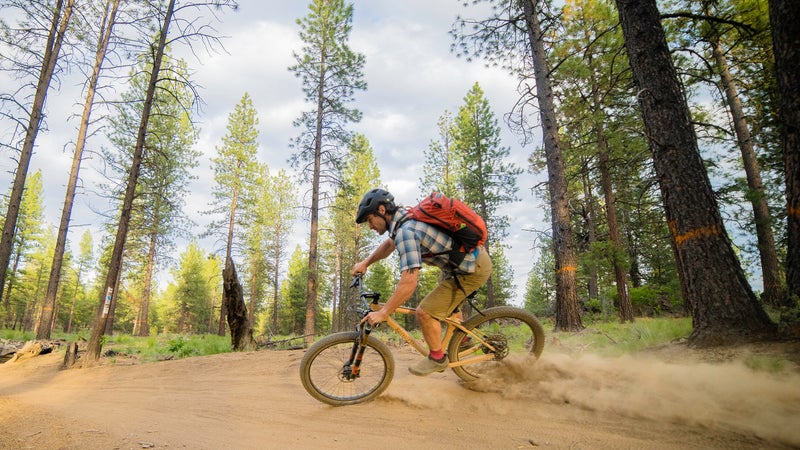
The frame components now resemble the finished product. But before they are bonded together, the interiors of the hollow tubes are sealed, eliminating the potential for moisture to invade the wood from the inside.
Joints are then fitted together, constructing the frame, head tube, and seat tube. Bottom brackets are inserted, and the dropouts are attached.
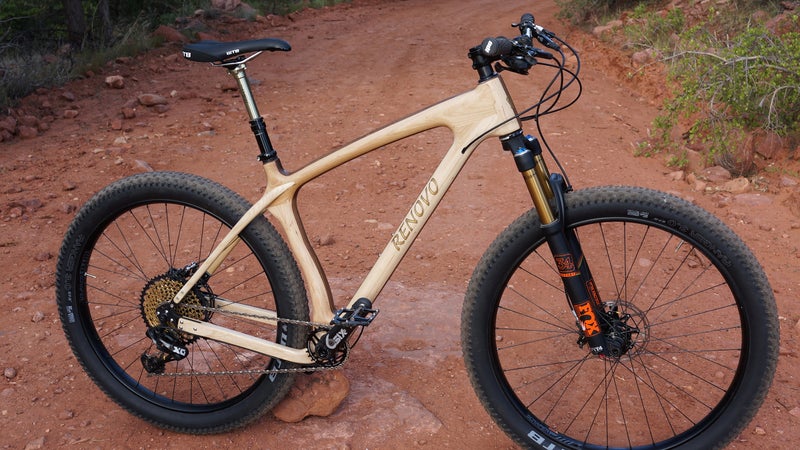
What’s the Fat-Ash?
Designed for versatility, responsiveness, and reliability, the hardtail Fat-Ash is intended to be a do-anything mountain bike. Designed around the 27.5-inch wheel with plus-size tires, it can also accept 29ers.
Those larger tires on the midsize wheel make for a stable ride, with lots of rubber on the ground to increase traction. Lower the air pressure a bit and you get a cushy ride that seems to float over harsh terrain. There are drawbacks, of course. Larger tires are heavier, so they’re also slower to accelerate, less nimble, and just like the big mud terrains on your truck, incredibly sensitive to inflation pressure. You can read more about the benefits and drawbacks of plus-size tires here.
At 68.5 degrees, the Fat-Ash’s head-tube angle is just right. Climbing tight switchbacks is possible, yet the angle is relaxed enough to inspire confidence during fast descents. Medium-length chainstays make lifting the front wheel off the ground easy but also keep it planted while attacking steep climbs. A relaxed seat-tube angle puts weight over the back tire for better control at speed. The bottom bracket sits low in the frame, but pedal strikes are rare. All-up weight with top-spec components is 25 pounds. This is a Goldilocks bike—it’s just right.
Built with top-of-the-line components, like a Fox Factory 34 fork (120mm of travel), SRAM Eagle 12-speed drivetrain, and Thomson stem and dropper post, there’s really nothing here to left to be desired. The only thing I found unsatisfactory were the lock-on grips, which mount the lock ring on the outside of the bar, creating a hard contact point in an area I like to grab while climbing. The frame design also limits how low you can position the brake and shifter levers: Push them down too far and they’ll put a groove in the top tube.
Limited frame sizes may be a bugbear for very tall or very short riders. There are only two sizes: 17- and 19-inch. That means if you’re shorter than 5’6″ or taller than 6’2″, you’ll have to order a custom frame.
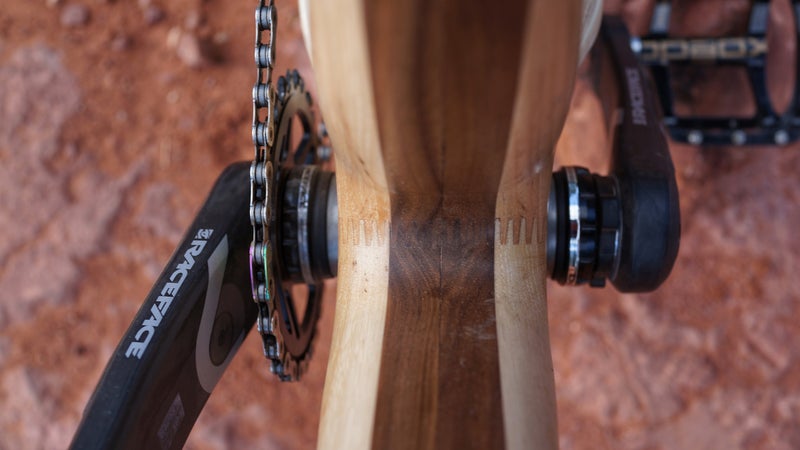
Who’s It For?
For the mountain biker who needs just one more bike in their quiver, the Fat-Ash rides well and is stunning. It’s a true conversation piece that also performs on cross-country trails. Combined with exceptional build and ride quality, the Fat-Ash justifies its $3,450 frame-only price ($7,145 complete, as pictured).
Of course, that beautiful wood finish is the visual selling point, but it may also leave riders loathe to push the bike’s limits across sharp, rocky terrain. Consider if that’s a factor before you fork over the cash.

Riding It
Two things about this bike really stand out: vibration damping and noise—or the lack of it.
Wood absorbs vibration through its fibrous cellular structure, making it far better at reducing jarring. The effect is subtle but significant. The cumulative effect of these forces amount to a lot of mental and physical fatigue over the course of a three-hour ride. Day in, day out, eliminating this feedback makes an enormous difference. That wood dampens vibration better than aluminum is obvious, but the degree to which it outperforms carbon, steel, and titanium will surprise you. Wood damps twice as efficiently as titanium.
Gone too is frame noise. The high-pitch ting of a rock hitting the down tube, the hollow brushing rumble of pine needles across the seat tube, the clickety-clack of a chain hitting the stay, the amplified echo of a creaky bottom bracket—all gone.
Only after you’ve had the chance to ride something as quiet as the Fat-Ash do you realize what you’ve been missing. Sounds that didn’t exist before now become part of the riding experience.
The smooth, quiet ride of the Fat-Ash would mean nothing if the bike didn’t also handle superbly. I’m happy to report that the torsional stiffness of the wood works exceptionally with the rock-solid frame geometry, and it’s all tied together with impeccable construction and a great set of components.
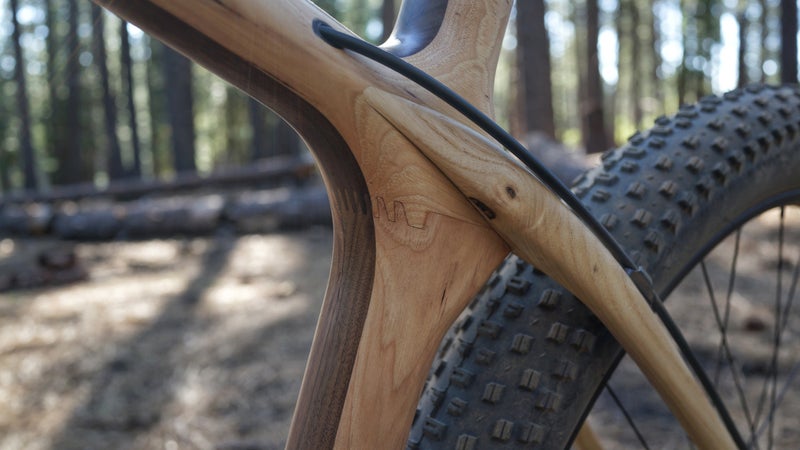
Likes
- Absolutely beautiful bike
- Whisper quiet
- Velvety smooth
- Versatile
- Predictable
- Lively
- Unique
Dislikes
- Limited stem and brake/shift lever position
- Too many people want to talk to you at every trailhead
- Limited sizes
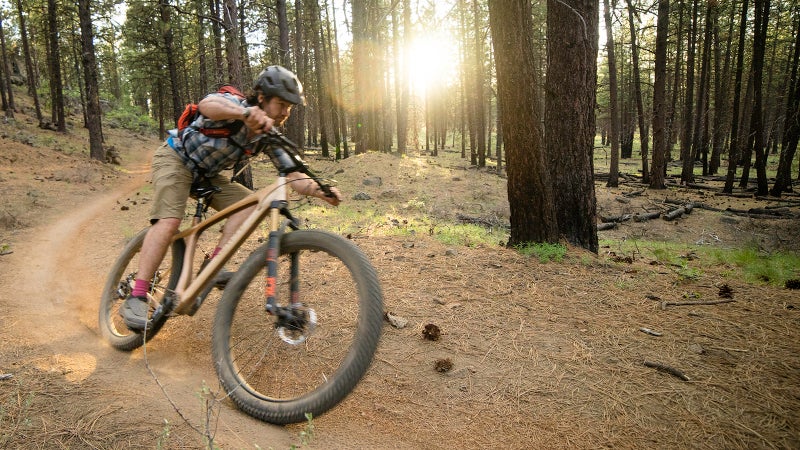
One Last Thing: Just How Durable Is a Wooden Mountain Bike?
There’s a picture in the Portland showroom showing 3,000 pounds of weight hanging from the bottom bracket of a Renovo frame. The rear dropouts and head tube are supported by steel rods, because no suspension, tires, or wheels could ever support that kind of weight.
Also in the showroom is Renovo’s first-ever mountain bike. The geometry and components date the bike—steep head tube, early ten-speed, 2.1-inch-wide 29er tires—and it’s been ridden heavily for years, but nothing on it is damaged. After several years of bombing trails, the bike still looks like new.
Wheeler claims that wood—correctly selected, bonded, and machined—matches or outperforms the strength of carbon fiber and aluminum frames. So far, in Renovo’s ten-year history, no frames have failed.



